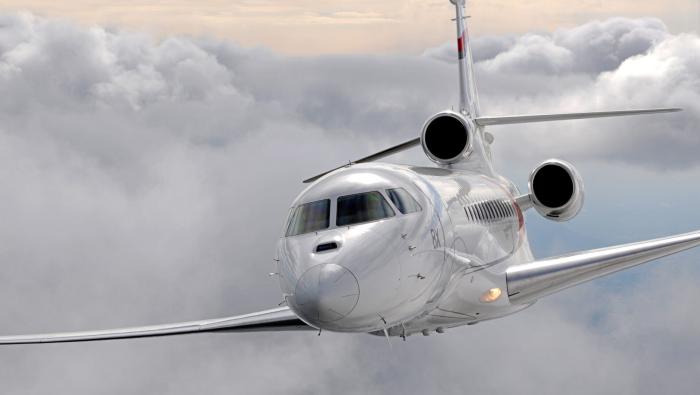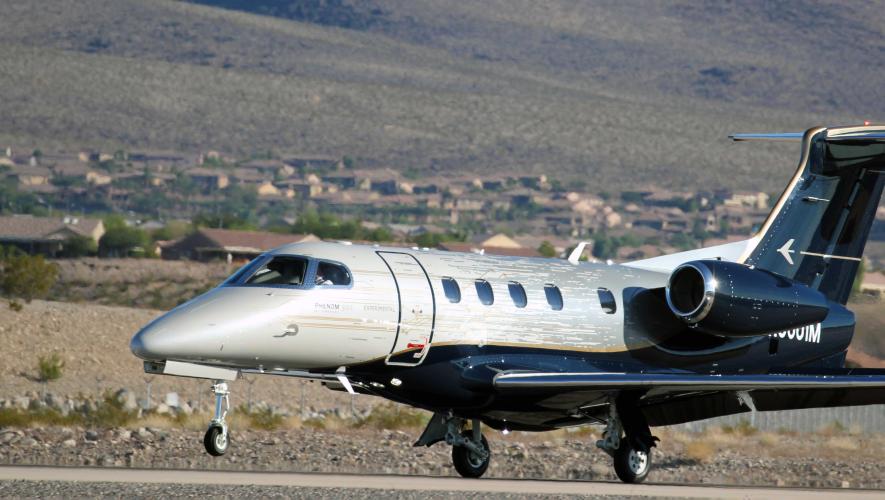The long-anticipated type certification of the Hawker 4000 (née Horizon) super-midsize business jet was imminent at press time–but only if the FAA approved Raytheon Aircraft’s requests for exemptions from two significant FAR amendments. Without these approvals, the company said, “Another delay may result in completing type certification and delivery of the Model 4000.” The FAA on June 30 published
the petition for exemptions with a comment period extending to July 20.
Raytheon Aircraft on May 31 reached the FAA’s five-year time limit for certification of the Hawker 4000 under Part 25 amendments that existed at the time of the aircraft’s type certification application. In anticipation of not receiving type certification before the deadline, Raytheon applied for an extension on May 11, and the FAA granted an extension to December 31. But the extension requires the new aircraft to comply with Part 25 amendments that were adopted between May 31, 2001–when Raytheon made the Hawker 4000 type certification application–and Dec. 31, 2001.
Because the aircraft was not originally designed to these amendments, Raytheon in mid-June sent letters to the FAA asking for a two-year exemption to meet fuel-tank ignition prevention rules (FAR 25.981, Amendment 102) and a one-year exemption to meet hydraulic system performance rules (FAR 25.1435, Amendment 104). The exemptions would provide time to complete an analysis and, if required, develop any design changes to the Hawker 4000, in addition to allowing the airplane to be type certified without any additional delay.
In its justification for these exemptions, Raytheon Aircraft told the FAA that these requests have “no safety” impact. In the case of the fuel tanks, Raytheon Aircraft believes that “any additional safety benefit from full compliance to this amendment for this size aircraft would not be commensurate with the costs involved. This is especially true for the Model 4000 where the design and build activity is complete.” The company said it might even pursue a “permanent exemption” to FAR 25.981, Amendment 102.
Slow Certification, More Stringent Requirements
There is no question that the lengthy certification process (Raytheon Aircraft announced the aircraft at the 1996 NBAA Convention) has dragged the Hawker 4000 into design requirements it would have avoided if its approval process had beaten the clock. In fact, the two amendments for which the exemptions are sought became effective on June 6, 2001, six days after the May 31, 2001, date of the type certification application. As such, the company believes that the requirements are not justified.
Raytheon Aircraft noted that the Aviation Rulemaking Advisory Committee Fuel Tank Harmonization Working Group (FTHWG) reviewed accident data that showed the three fuel tank explosions since 1960 with unknown causes all involved center wing tanks on Boeings that had been heated by air-conditioning packs. The data showed no spontaneous ignition events for wing tanks.
“The Model 4000 has no center wing tank,” the company told the FAA. “In addition, the air-conditioning pack is located in the tail.” Raytheon said it has completed additional design and testing for the Hawker 4000, beyond what is required for compliance with Amendment 11 of FAR 25.981 to further prevent fuel system ignition sources. “The Model 4000 fuel system is safe, exceeds the requirements of its current certification basis (FAR 25.981, Amendment 11) and meets the safety objective envisioned by the FTHWG for Amendment 102 for this size of aircraft.”
Additionally, Raytheon Aircraft pointed out that a retrofit requirement to meet FAR 25.981 Amendment 102 applies only to airplanes with a certified passenger capacity of at least 30 passengers or at least 7,500 pounds of payload. Retrofit is not required for smaller airplanes because, according to Raytheon Aircraft, “it is not clear at this time that the possible benefits for those airplanes would be commensurate with the costs involved.”
If the Hawker 4000 had received type certification by the end of May, “the FAA would have been satisfied with the current fuel system design and its level of safety,” the company said. “Therefore, the current fuel system design of the Model 4000 provides an acceptable level of safety.”
Raytheon Aircraft makes a similar argument to justify its request for a 12-month exemption to FAR 25.1435, Amendment 104, regarding the hydraulic system. “Initial coordination with Raytheon suppliers has indicated there may be inadequate time available (before December 31) to conduct and document the required certification tests of affected components, such as accumulators.” What’s more, said Raytheon, the safety record for hydraulic systems similar to the Hawker 4000’s indicates that designs to the existing certification basis for the aircraft (FAR 25.1435, Amendment 72) “are safe and adequate.”
For Hawker 4000 operators, a critical aspect of these exemptions, if approved, is the retrofit issue. The FAA’s published notice of the petitions said that the exemptions would allow Raytheon Aircraft not only to develop design changes, if required, but also time to “retrofit the Model 4000 fleet.” However, a company spokeswoman told AIN that if the exemption is granted, any mandated design changes would apply only to newly built aircraft and would not be a retrofit requirement for aircraft delivered before the design changes were FAA-approved.
The only other new business jet design for which these amendments apply is the Falcon 7X, scheduled to receive type certification in next year’s first quarter. The amendments were in effect from the get-go for the 7X, and a Dassault spokesman told AIN that the company does not expect any problems with meeting the requirements.







